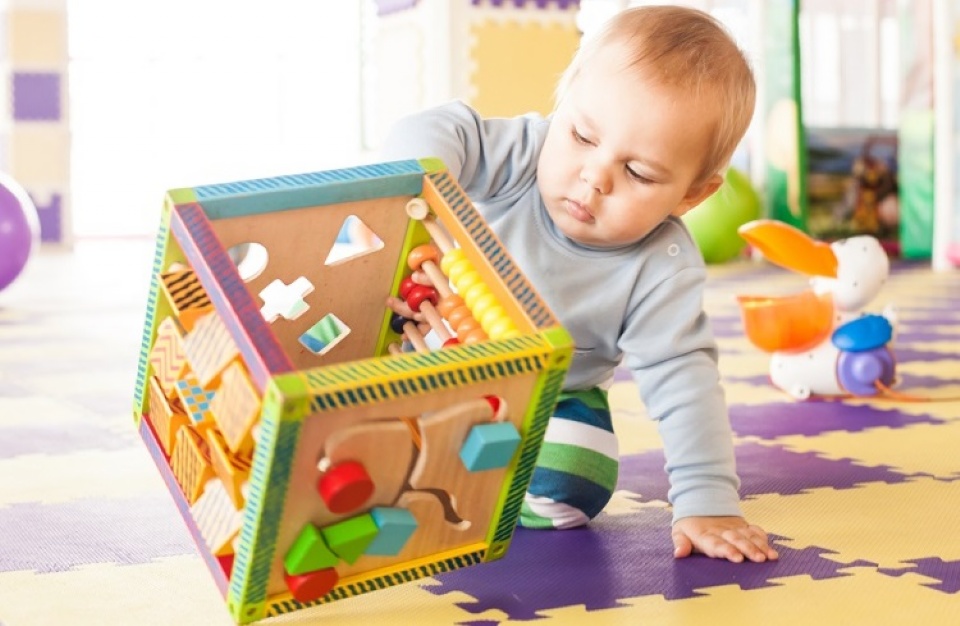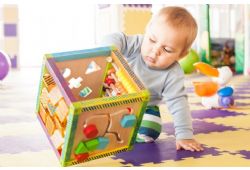It is known that the first seven years, and in
particular, the first three years, are critical for forming the foundation of proper
development in a child. During this period, a child’s brain is similar to a
sponge and can learn more quickly than at any other time. It is thus crucial,
to provide opportunities for the child to experiment, learn, and consequently
develop appropriate language, cognitive, social and motor skills.
The developmental sphere that is easiest to
stimulate, yet often overlooked is the motor development which includes fine
and gross motor skills. Parents believe that a child will learn through play
and develop at his own pace. True, yet with the change to sedentary lifestyles
and technological advances, there is an increase limitation to activities and
participation.
A parent, although busy managing children,
home, and work, can integrate stimulating activities within the daily routines.
The key is to start early, and there is no such thing as too early.
Here are
some ideas of early childhood stimulating activities to improve fine and gross
motor skills.
Infant;
- Provide as many opportunities as possible for Tummy Time when the baby is alert and active. This will aid in developing neck, shoulder, and core strength. It will also aid in getting the baby ready to push up, roll over, sit up, crawl, and later, stand. Tummy Time also encourages proper development of fine motor skills by preparing the shoulder, arms and hands for fine motor tasks.
- Encourage crawling instead of placing the child in the baby walker. Some parents believe that it is not necessary for a child to crawl. However skipping this step also means skipping the proper development of the arches in the hands and wrist extension needed for important fine motor skills. In addition, crawling provides weight bearing opportunities into the arms, which will improve shoulder stability. An added benefit to crawling is the development of bilateral coordination skills where the child uses both sides of the body at the same time.
- Allow the child to explore and manipulate crayons, markers, chalk, or any other writing tool. Some parents avoid giving their children writing tools so as not to make a canvas out of their walls. An easy solution is to provide the tools only under supervision. To facilitate the grasp and control of the writing tool, adapt the tool to the little hands of the child. Ideally it should only exceed one inch above the hand. The best thing to do is to break the crayons and chalk into pieces, which children already love doing.
- Work on visual motor integration by having the child replicate or copy forms. An interesting activity for a child is to use different tools such as wiki sticks, toothpicks, coloured popsicle sticks, blocks and so on, to replicate forms presented to him. For example, build a train with four different coloured blocks, and ask the child to replicate it by paying attention to the specific colours and number of blocks used.
- Don’t be afraid to introduce scissors at home. There are plastic scissors available that can be used to cut Playdoh. Scissors with safety-edge blades can also be provided with supervision to make small snips on paper. Start with thicker material which is easier to cut and later grade it down to thin lined paper. The child should learn to hold scissors with thumb in small hole and index and middle finger in the larger hole. Non-dominant hand should stabilize the paper while dominant cuts with scissors, with both thumbs directed up.
- Encourage playing with lacing boards, stringing beads, making necklaces, or any type of activity where the non-dominant hand controls and the other manipulates to improve bilateral integration.
- Enhance gross motor skills by creating a fun obstacle course with home objects. The course can include going under a chair or table, crawling through boxes, walking on pillows, jumping over hurdles, and throwing a ball into the basket. Your imagination is the limit!
- Play ‘Follow the Leader’ or ‘Simon Says’ which allows the child to imitate motor movements. The parent can also play an action song where the child follows along the actions of the song. This activity can be adapted by adding specific actions based on the child’s physical abilities.
- Improve eye-hand coordination skills by having the child catch and throw a ball. Start with a small distance and slowly increase the distance between yourself and the child. Note that a smaller ball (e.g., tennis ball) should be used for older children. The child can also bounce the ball, practice dribbling a ball, play a beanbag toss game, balloon volleyball, or mini badminton. All of which can be done indoor when the weather does not permit for outdoor activities.
- Let the child practice going up and down the stairs by alternating his feet. If the child is fearful, provide a finger for support and place him in the middle of stairs. Then slowly remove finger and stay close to him in case he loses balance. While going down the stairs, encourage child to jump down the last step or the last two if possible by taking off and landing on both feet. While going up the stairs, the child can hold the hand rail, placing both feet on each step and jumping each step one at a time.
To read more articles from Motherforlife website, please visit Motherforlife.com




 BY:
BY: 

Tweet
Share